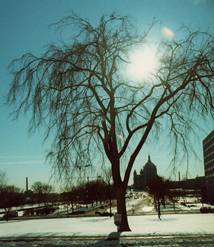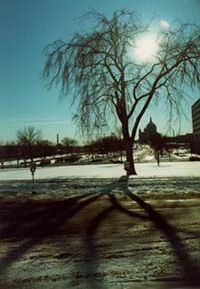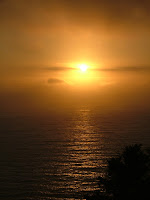Let me first point out that I'm a big fan of Photomosaics. Besides having seen posters (like the American dollar bill made out of currency from around the world), I first fell in love with the art when I found a Photomosaic puzzle of the Earth at a yard sale. After completing it (this took months and many backaches to finish it) my wife and I purchased and completed the
Starry Starry Night puzzle. We next purchased the La Grande Jatte Photomosaic puzzle, but have not started it yet. Although this may seem like an odd way to become familiar with the art, when completing a puzzle one must analyze every piece; however, when it comes to a Photomosaic puzzle, one must analyze every picture (often up to six) that appears on every piece. This hobby really made me appreciate all the images that make up the final Photomosaic picture.
Lastly, I was excited to realize that Apple's new operating system, Leopard, has a Photomosaic option for one's screen saver. After selecting a picture folder, the screen saver will first display a single image then zoom out to expose adjacent images until they all join together to form a single, different picture - that's the best I can describe it.
All that said, here is a self Photomosaic portrait made from my newly scanned Appalachian Trail photo collection. My first attempt (although much truer to the original photo's colors) appeared bland, rotated images 90 degrees, and seemed to allow too many duplicates. So, for this second one, I set the tiles to 2000, limited duplicates to 50 times, unchecked the rotate option, and... I think that's about it. In contrast to my first attempt, this image appears to have used more green in my "blue" t-shirt because I set these limitations.

 then
then 
 then
then 
 then
then 
 then
then 










